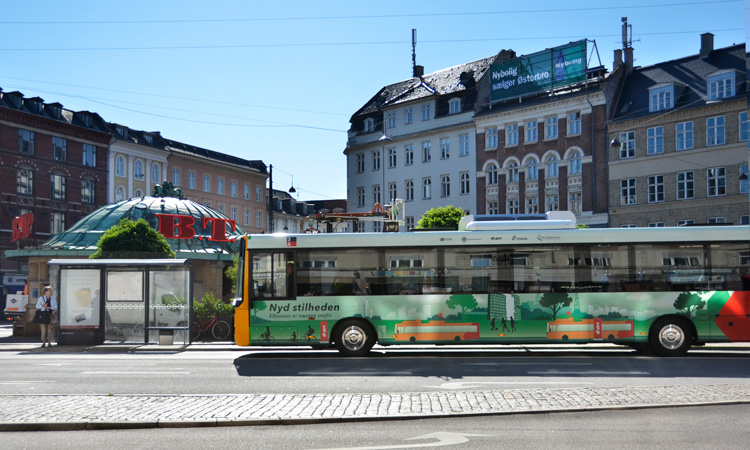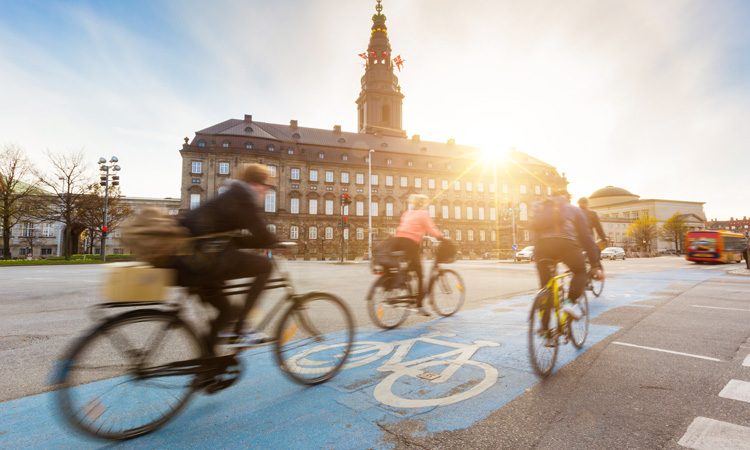Copenhagen’s drive to become connected and carbon neutral
- Like
- Digg
- Del
- Tumblr
- VKontakte
- Buffer
- Love This
- Odnoklassniki
- Meneame
- Blogger
- Amazon
- Yahoo Mail
- Gmail
- AOL
- Newsvine
- HackerNews
- Evernote
- MySpace
- Mail.ru
- Viadeo
- Line
- Comments
- Yummly
- SMS
- Viber
- Telegram
- Subscribe
- Skype
- Facebook Messenger
- Kakao
- LiveJournal
- Yammer
- Edgar
- Fintel
- Mix
- Instapaper
- Copy Link
Posted: 22 January 2020 | Mikkel Krogsgaard Niss - City of Copenhagen Centre for Urban Development | No comments yet
Intelligent Transport spoke with Mikkel Krogsgaard Niss from the City of Copenhagen to learn more about how the city is moving towards its ambitious carbon neutral goals and the factors affecting the process.


What work is the City of Copenhagen currently doing and what challenges have you come up against?
We are currently working on two primary projects; the electrification of our bus fleet and the reduction of CO2 from car traffic. We are on course to have a 100 per cent electric bus fleet by 2025. When it comes to reducing CO2, we’re focusing on how we can reduce car traffic by making new road networks – not by building new roads, but by stopping traffic at certain points and rerouting it.
We have signed the C40 Clean Air Declaration, but we also have our own climate plan to be carbon neutral by 2025. In order to achieve this target we need to reduce emissions from traffic as well.
As a city, we need to set visions and ensure we can realise them; we can only do so through close cooperation with our public and private partners
Mindful of our cooperation between parties, we are looking at how we can work together with Siemens, who won our tender for urban charters of electric buses, and how we can work together with our private bus operators to make the process as cheap as possible for us. In Copenhagen, we finance public buses approximately 30-50 per cent, which is significant, but normal in Scandinavia.
As a city, we need to set visions and ensure we can realise them; we can only do so through close cooperation with our public and private partners.
The deadline to be carbon neutral by 2025 is fast approaching, how do you aim to meet this target in just five years’ time?
We realise that 2025 is going to come around very soon. It’s a net carbon neutral goal, so we still expect there to be diesel and petrol cars on the street. On the other hand, we are also implementing other measures to meet the target, such as installing wind turbines.
Investing in things like this, of course, brings benefits not only for us, but also for our native neighbouring municipalities. Naturally, the traffic will still produce emissions, but these new measures should balance them out, bringing us to zero. Projections based on today see a reduction in emissions of around 90 per cent when compared to 2009 levels. For us, this is not enough; to achieve that last 10 per cent, we are looking into further reducing traffic emissions by avoiding single car trips and encouraging people to instead make those journeys on public transport, by bike or walking.
It seems the industry needs to constantly revise its goals as challenges and obstacles such as climate change evolve. Do you agree?
Yes, absolutely. The consensus among scientists is that if we don’t look to improve on our current targets, we will be looking at a temperature increase of three degrees or more. In Copenhagen in 2020 we are conducting a new investigation into these claims, assessing how to ensure our global contribution. One solution could be removing the incentives for petrol and diesel cars, so that electric vehicles gain momentum.
Intermodal hubs are another possibility, where you make the change between bicycle and public transport. We could try to create two to three schemes looking at how to reach at least 50,000 tonnes of CO2 reduction per year.
The idea of an intermodal hub could be called the ‘physical’ side of Mobility-as-a-Service; apps and integrated services don’t amount to much without the infrastructure to support it. MaaS is a fantastic vision that would make it easy for users to always find the best solution to get from A to B and back again, and hopefully, on an app, the cheapest or easiest way. To make it work, we need to have all the relevant parties to work together. We need to have public partners and private partners to deliver data to such a system.
It is also important to deliver a front end where they can accept reduced income, for instance, if the trip being taken is multimodal. For example, going from A to B using a shared car, public transport and a shared bike, the cost of each of those services is reduced to ensure the user gets a good deal across their journey from A to B instead of just combining three prices for three difference modes.
The idea of an intermodal hub could be called the ‘physical’ side of Mobility-as-a-Service; apps and integrated services don’t amount to much without the infrastructure to support it
As a city, we need help from the citizens but also from industry. We’ve had help from citizens in the last few years when looking into how they are using Copenhagen’s bike infrastructure. We are experiencing congestion in our bike lanes. Forty-nine per cent of the commuter trips to central Copenhagen are made by bike and that means that the bike lanes are under immense pressure. People from outside Copenhagen are sometimes scared to use bikes when they’re in the city because there are so many. The problem is that there is simply not the infrastructure to support the number of cyclists in the city, so people sometimes feel safer using a car, which we don’t want them to do.


The other problem is that every time we get a person to travel by bike, they stop using public transport. This means we are having more and more difficulties in making a business case for public transport because fewer people are using it.
At the moment, it is a struggle for public transport companies to integrate their services because of the amount of hype around new types of services, but it could just be a passing phase. What’s happening now will have its place, but the dust is yet to settle; the overall impact is impossible to know.
Technology has evolved and people are using it differently than we were perhaps anticipating. The biggest challenge currently being faced in having different parties work together on MaaS wasn’t really considered five years or 10 years ago when the concept was first developed. At that point, it was just about bringing together the data and then everything would work fine, and everyone would use public transport.
In Copenhagen today, people can find the data in our public transport journey planner app
However, now the technology is there and we have all the data. We can combine the data – that’s not really a problem – but there isn’t really a single product to buy, people need to buy two, three or four products, so it doesn’t really work yet.
You have the data, you have the services – how can the industry make it all fit together efficiently?
The market is developing towards open data in this area. In Copenhagen today, people can find the data in our public transport journey planner app.
No matter what your opinion is on e-scooters and other types of shared services, people know they can be found within Google Maps and can use them as part of a multimodal journey. It is interesting how has Google become a hub for these things, but so far has excluded the ability to pay for transport services. The kinds of partnerships they need to make this happen already exist, so it feels like it’s within their reach. When you start considering elements like revenue split, things get more complicated. In Copenhagen we have five different public companies splitting the revenue and they often cannot agree – and that’s only the revenue for public transport.
Do you think it’s possible that the today’s mobility market consolidates to the extent that all available services can be seamlessly integrated and interoperable?
I don’t know if it is possible. In Denmark, we have public transport companies that are tendering out driving services where users can ride with people with reduced mobility in rural areas where buses are not available. In parts of Denmark, they have put this into a new MaaS app where users can actually combine this service with public transport and plan a journey from A to B, from one address to another. It then tells the user that the taxi will pick them up at a certain point, take them to the train station or bus station (if they’re able to complete part of their journey that way), and then, on the other end, also take a new taxi to their final destination. Users get a price and then pay using their smart travel card.
I think for probably the first time we are starting to see the effect that our own personal travel habits have on the environment, and hopefully that’s a trend that will continue
Of course, this is all happening within the same PTA, and the PTA already has the services for those people with reduced mobility, so they use the same contract for expanding the service. For them, they keep everything within one company which makes things easier. It’s proving to work and people are using it. I wonder if at some point, with these agreements that are difficult to make in the first instance, whether the benefit for the end user might be the thing that drives them forward.
The focus on public transport is there, the focus on bikes is there, but to make all these companies work together, they may see a business case now in people going by car today and wanting to do something different.
I think for probably the first time we are starting to see the effect that our own personal travel habits have on the environment, and hopefully that’s a trend that will continue.
Biography
Mikkel Krogsgaard Niss is Head of Section Project Manager, City of Copenhagen Centre for Urban Development. He is Special Advisor at the Lord Mayors department at City of Copenhagen. During the last years, Mikkel has worked as project manager for environmental projects in relation to public transport with a strong focus on e-buses. He is currently responsible for implementing the city’s bold ambitions for 100 per cent electric buses by 2025.
During the last 10 years, Mikkel has worked in the public sector. Primary areas of work are public transport, freight and environmental issues. Mikkel has worked six years for the City of Copenhagen and prior to this for the Danish Transport Authorities and The Danish Board of Technology, holding a Master’s degree in Environmental Planning from Roskilde University.
Related topics
Infrastructure & Urban Planning, Mobility Services, Public Transport, Sustainable Urban Transport
Related organisations
City of Copenhagen








